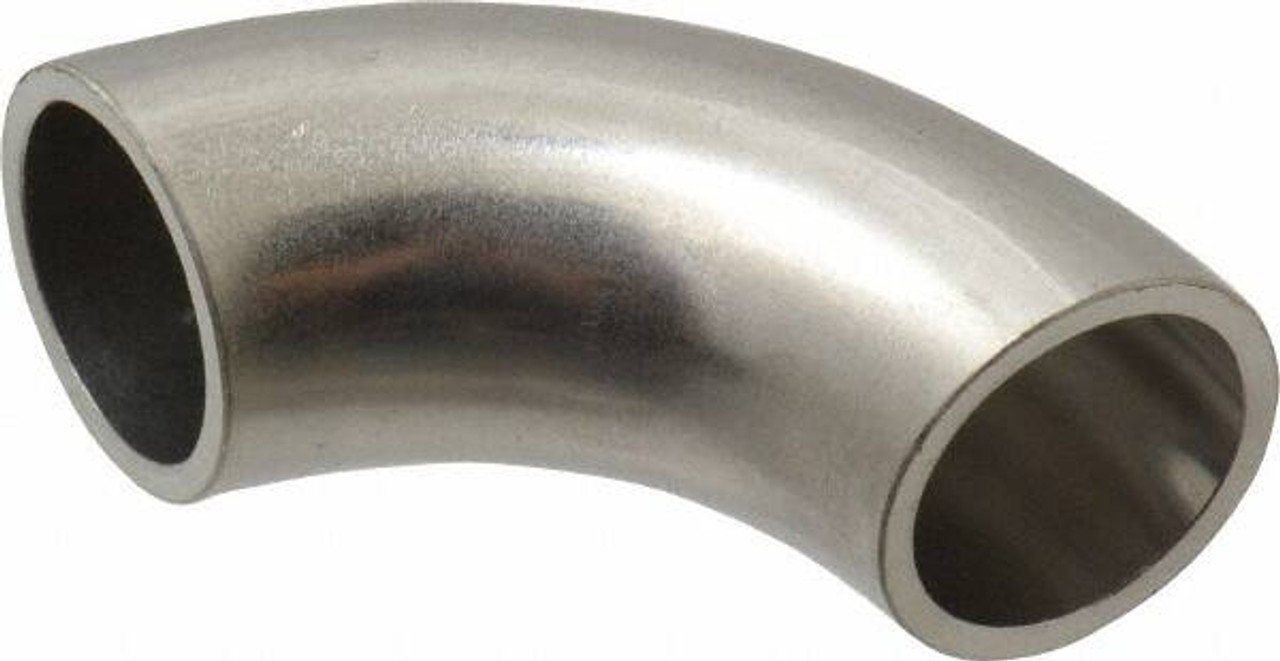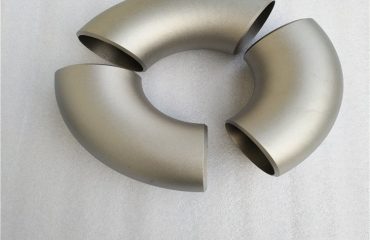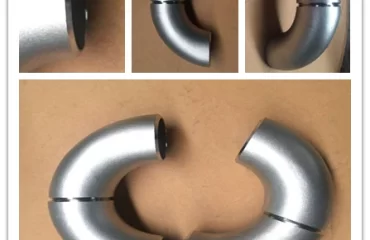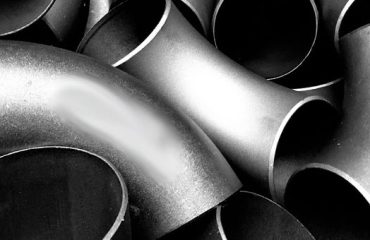
ASME B16.25 Siku Kimpalan Punggung
pengenalan
ASME B16.25 adalah standard yang merangkumi penyediaan hujung kimpalan pantat komponen paip untuk membuat sendi dikimpal. Standard ini penting untuk memastikan komponen paip yang sesuai dan kimpalan, membawa kepada sendi yang boleh dipercayai dan bebas bocor. Siku kimpalan pantat adalah jenis pemasangan biasa yang dilindungi di bawah standard ini, Digunakan untuk menukar arah aliran dalam sistem paip sebanyak 45 °, 90°, atau sudut lain.
Jenis siku kimpalan pantat
1. 45-darjah siku
Siku 45 darjah mengubah arah aliran dengan 45 °. Ia biasanya digunakan dalam sistem di mana perubahan lancar ke arah diperlukan tanpa menyebabkan pergolakan.
2. 90-darjah siku
Siku 90 darjah mengubah arah aliran dengan 90 °. Ia adalah jenis siku yang paling biasa digunakan dalam sistem paip, Sesuai untuk membuat giliran tajam.
3. 180-darjah siku
Siku 180 darjah digunakan untuk menukar arah aliran sebanyak 180 °, berkesan membalikkan arah aliran. Jenis ini kurang biasa tetapi digunakan dalam situasi tertentu di mana giliran U dalam paip diperlukan.
Spesifikasi dan dimensi
1. Saiz Paip Nominal (NPS)
ASME B16.25 merangkumi pelbagai saiz paip nominal (NPS), biasanya dari 1/2 inci ke 48 inci. Saiz siku berkorelasi dengan saiz paip itu akan dikimpal.
2. Ketebalan dinding
Ketebalan dinding siku kimpalan pantat ditentukan oleh nombor jadual (cth., SCH 10, SCH 40, SCH 80). Nombor jadual menunjukkan ketebalan dinding paip dan, akibatnya, dinding siku.
3. Radius kelengkungan
Terdapat dua jenis kelengkungan siku utama:
- Jejari Pendek (SR): Jejari kelengkungan sama dengan saiz paip nominal (1D).
- Jejari Panjang (LR): Jejari kelengkungan ialah 1.5 kali saiz paip nominal (1.5D). Siku jejari panjang biasanya digunakan kerana ia menyebabkan kurang tekanan dan gangguan aliran.
4. Penyediaan akhir
Hujung siku kimpalan pantat disediakan mengikut ASME B16.25 untuk memastikan kimpalan yang betul. Penyediaan ini biasanya melibatkan beveling hujung siku untuk memudahkan proses kimpalan.
Pemilihan Bahan
Siku kimpalan pantat dihasilkan dari pelbagai bahan untuk memenuhi aplikasi dan persekitaran yang berbeza. Bahan biasa termasuk:
- Keluli karbon: Sesuai untuk aplikasi tujuan umum.
- keluli tahan karat: Menawarkan rintangan kakisan yang sangat baik dan digunakan dalam bahan kimia, Farmaseutikal, dan industri makanan.
- Besi aloi: Digunakan dalam persekitaran tekanan tinggi dan suhu tinggi.
- Keluli Tahan Karat Dupleks: Menggabungkan sifat keluli tahan karat austenitik dan ferritik, Menawarkan kekuatan yang tinggi dan ketahanan yang sangat baik terhadap keretakan kakisan tekanan.
Proses pembuatan
1. menjalin
Siku kimpalan pantat sering dihasilkan menggunakan proses penempaan, yang melibatkan membentuk logam menggunakan daya mampatan. Proses ini meningkatkan sifat mekanikal dan struktur bijirin bahan.
2. Membentuk
Dalam proses pembentukan, logam dibengkokkan atau dibentuk ke dalam konfigurasi siku yang diperlukan. Ini boleh dilakukan dengan menggunakan kaedah seperti pembentukan panas atau pembentukan sejuk, bergantung pada bahan dan spesifikasi.
3. Rawatan haba
Selepas membentuk, Siku mungkin menjalani proses rawatan haba seperti penyepuh atau menormalkan untuk melegakan tekanan dalaman dan meningkatkan sifat mekanikal.
4. Pemesinan
Hujung siku dimesin untuk memastikan mereka memenuhi dimensi dan toleransi yang diperlukan oleh ASME B16.25.
5. Pemeriksaan dan Pengujian
Langkah -langkah kawalan kualiti seperti pemeriksaan dimensi, Ujian tidak merosakkan (NDT), dan ujian tekanan dijalankan untuk memastikan siku memenuhi piawaian dan spesifikasi yang diperlukan.
Aplikasi
Siku kimpalan pantat digunakan dalam pelbagai industri, termasuk:
- Minyak dan Gas: Untuk mengangkut minyak mentah, gas asli, dan produk halus.
- Pemprosesan Kimia: Dalam sistem mengendalikan bahan kimia yang menghakis dan cecair suhu tinggi.
- Penjanaan Kuasa: Dalam garis stim tekanan tinggi dan suhu tinggi.
- Rawatan Air: Untuk menyampaikan air dan air sisa dalam loji rawatan.
- Farmaseutikal: Dalam sistem paip sanitari yang memerlukan rintangan kakisan yang tinggi dan kebersihan.
Pemasangan dan kimpalan
1. Persediaan
Penyediaan yang betul adalah penting untuk kimpalan yang berjaya. Ini termasuk membersihkan paip dan siku berakhir, menyelaraskan komponen, dan memastikan kesesuaian yang betul.
2. Teknik kimpalan
Teknik kimpalan biasa untuk siku kimpalan pantat termasuk:
- Gas inert tungsten (TIG) Welding: Menawarkan ketepatan dan kualiti yang tinggi, Sesuai untuk aplikasi berdinding nipis dan kritikal.
- Gas inert logam (SAYA) Welding: Menyediakan kelajuan kimpalan yang lebih cepat dan sesuai untuk bahagian yang lebih tebal.
- Kimpalan Arka Logam Terlindung (SMAW): Serba boleh dan digunakan secara meluas, Terutama dalam aplikasi lapangan.
3. Pemeriksaan selepas kimpalan
Selepas mengimpal, Sendi diperiksa menggunakan kaedah seperti ujian radiografi (RT) atau ujian ultrasonik (UT) untuk memastikan integriti kimpalan dan mengesan sebarang kecacatan.
Trend dan inovasi masa depan
Landskap pembuatan dan permohonan untuk ASME B16.25 Butt Weld siku bersedia untuk kemajuan yang ketara. Trend dan inovasi ini didorong oleh keperluan untuk prestasi yang dipertingkatkan, kelestarian, dan integrasi dengan teknologi pembuatan moden.
Bahan lanjutan
1. Aloi berprestasi tinggi
Kemajuan dalam metalurgi membawa kepada pembangunan aloi berprestasi tinggi yang menawarkan kekuatan yang unggul, rintangan kakisan, dan ketahanan.
- Superalloys: Superalloys berasaskan nikel sedang dibangunkan untuk aplikasi suhu tinggi dan tekanan tinggi, seperti yang terdapat dalam aeroangkasa dan penjanaan kuasa.
- Aloi titanium: Dikenali dengan nisbah kekuatan dan berat badan mereka yang tinggi, aloi titanium menjadi lebih lazim dalam aplikasi kritikal.
2. Bahan Komposit
Penggunaan bahan komposit dalam sistem paip muncul, Menggabungkan logam dengan bahan lain seperti seramik atau polimer untuk meningkatkan sifat seperti rintangan haba dan pengurangan berat badan.
Pembuatan Aditif (3D Mencetak)
Pembuatan Aditif merevolusikan pengeluaran komponen paip kompleks, termasuk siku kimpalan pantat.
- Reka bentuk tersuai: 3D Percetakan membolehkan penciptaan kebiasaan, Geometri kompleks yang sukar atau mustahil untuk dicapai dengan kaedah pembuatan tradisional.
- Prototaip cepat: Jurutera dapat dengan cepat prototaip dan menguji reka bentuk baru, mengurangkan masa dan kos pembangunan.
- Kecekapan bahan: Pembuatan tambahan meminimumkan sisa bahan, Menggalakkan kemampanan.
Pembuatan dan Industri Pintar 4.0
industri 4.0 prinsip, termasuk IoT (Internet perkara), data besar, dan ai (Kecerdasan Buatan), mengubah landskap pembuatan.
1. Penyelenggaraan ramalan
- Sensor dan pemantauan: Pemantauan masa nyata peralatan dan proses menggunakan sensor membantu meramalkan kegagalan dan penyelenggaraan jadual sebelum kerosakan berlaku.
- Analisis data: Analisis data besar dapat mengoptimumkan proses pengeluaran, Mengurangkan downtime dan meningkatkan kecekapan.
2. Automasi dan Robotik
- Kimpalan robot: Sistem kimpalan automatik memastikan kualiti dan ketepatan yang konsisten, mengurangkan kesilapan manusia dan meningkatkan keupayaan.
- Kilang pintar: Sistem bersepadu dan robotik meningkatkan fleksibiliti dan kebolehsuaian dalam proses pembuatan.
Kemampanan alam sekitar
Kemampanan menjadi tumpuan utama dalam pembuatan komponen paip.
1. Kitar semula dan ekonomi bulat
- Kitar semula bahan: Menekankan kitar semula logam untuk mengurangkan penggunaan bahan mentah dan kesan alam sekitar.
- Ekonomi Pekeliling: Merancang produk untuk membongkar dan kitar semula yang lebih mudah pada akhir kitaran hayat mereka.
2. Proses mesra alam
- Pembuatan Hijau: Melaksanakan proses yang meminimumkan penggunaan tenaga dan pelepasan, seperti menggunakan sumber tenaga boleh diperbaharui.
- Salutan berimpak rendah: Membangunkan salutan yang melindungi komponen tanpa kesan alam sekitar yang berbahaya.
Teknologi salutan lanjutan
Inovasi dalam Teknologi Lapisan Meningkatkan Prestasi dan Kehidupan Butt Weld Elbows.
- Nanocoatings: Lapisan ultra tipis yang memberikan ketahanan kakisan yang unggul, Pakai rintangan, dan sifat hidrofobik.
- Salutan penyembuhan diri: Lapisan yang boleh membaiki kerosakan kecil secara automatik, Memperluaskan hayat perkhidmatan komponen.
Pemeriksaan dan ujian yang dipertingkatkan
Penambahbaikan dalam ujian yang tidak merosakkan (NDT) Kaedah memastikan kualiti dan kebolehpercayaan yang lebih tinggi.
- Ujian ultrasonik lanjutan (AUT): Teknik pengimejan resolusi tinggi untuk mengesan kelemahan dan memastikan integriti kimpalan.
- Ultrasonics Array Phased (PAUT): Menyediakan imej kimpalan terperinci, Membenarkan pencirian kecacatan yang tepat.
Kembar digital
Konsep kembar digital-Pelutan komponen fizikal -membenarkan simulasi dan analisis prestasi di bawah pelbagai keadaan.
- Analisis ramalan: Meniru tingkah laku komponen di bawah senario yang berbeza untuk meramalkan isu yang berpotensi dan mengoptimumkan reka bentuk.
- Pengoptimuman penyelenggaraan: Menggunakan kembar digital untuk merancang aktiviti penyelenggaraan dan meningkatkan pengurusan aset.
Kesimpulan
ASME B16.25 Butt Weld siku memainkan peranan penting dalam kebolehpercayaan dan kecekapan sistem paip di pelbagai industri. Memahami spesifikasi, bahan, proses pembuatan, dan teknik pemasangan adalah penting untuk memilih dan menggunakan komponen ini dengan berkesan. Dengan mematuhi piawaian dan amalan terbaik yang digariskan dalam ASME B16.25, jurutera dan juruteknik dapat memastikan keselamatan, prestasi, dan panjang umur sistem paip mereka. Masa Depan ASME B16.25 Butt Weld Elbows ditetapkan untuk dibentuk oleh kemajuan dalam bahan, Teknologi Pembuatan, dan amalan kemampanan. Dengan memeluk trend dan inovasi ini, industri dapat meningkatkan prestasi, kebolehpercayaan, dan jejak alam sekitar sistem paip, memenuhi tuntutan aplikasi moden yang berkembang.
Panduan Komprehensif ini memberikan gambaran terperinci mengenai siku kimpalan pantat ASME B16.25, meliputi segala -galanya dari jenis dan spesifikasi kepada proses pembuatan dan aplikasi. Panduan ini memberikan gambaran tentang trend dan inovasi masa depan dalam pembuatan dan penggunaan ASME B16.25 Butt Weld Siku, menonjolkan bagaimana teknologi dan amalan baru muncul untuk mengubah industri.




anda mesti log masuk untuk menghantar komen.